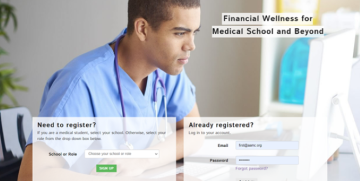Default
Defaulted loans occur when a borrower does not pay back their student loan debt as agreed upon in the master promissory note (MPN). An MPN is a legally binding contract that all federal student loan borrowers sign prior to receiving their loans. In the contract, borrowers commit to repaying the loan(s) they borrow — on time — without exception.
Delinquent vs. Default
Before a loan goes into default, it will first be considered delinquent. As soon as one payment is missed, even if the payment is just one day late, the loan is delinquent. Your loan will be delinquent until you make your loan payment and bring the loan current. If your loan is delinquent for 90 days, your loan servicer(s) will report the delinquency to all three credit bureaus: TransUnion, Equifax, and Experian. Delinquency will negatively impact your credit score and could make it difficult for you to obtain additional credit, insurance, or even get approved to rent an apartment. Default is more adverse than delinquency. A loan will go into default if payments are 270 or more days past due.
Consequences of Default
If you do not repay your loans and they go into default, there are several possible consequences — many of which can be financially detrimental. The consequences of default may include the following:
- The entire remaining loan balance (along with interest) may become due and payable immediately.
- The right to deferment, forbearance, and some repayment plans may be forfeited.
- Eligibility for additional federal student aid is denied. A borrower’s default status will be disclosed to current and previous schools.
- Loan(s) may be assigned to a collection agency, and any additional expenses related to the collection of the loan are the borrower’s responsibility.
- Credit bureaus will be notified of the default, which will damage the borrower’s credit score.
- Federal and state tax refunds may be withheld to offset the defaulted loan(s).
- Employers may be required to withhold wages for the debt.
- Some schools may withhold institutional services such as providing transcripts or letters of recommendation.
Preventing Default
First, know the loan types, loan rates, and servicer(s) of your loans. You can find all your federal student loan information on the Federal Student Aid website. Be aware of how your loans work, understand your responsibilities, manage your money by budgeting, keep track of your loan obligations, and maintain good records.
These are all critical first steps to preventing default. If you are having problems repaying your loan(s), contact your loan servicer. Ignoring the problem will not help; however, immediately dealing with your financial hardship can prevent delinquency and/or default. If you can’t make your monthly payment, or if you find that your monthly payment is too high, contact your loan servicer(s) to see if a deferment, forbearance, or a different repayment plan may be an option.
If you are in residency and you are having trouble repaying your student loans, you do qualify for a Mandatory Residency Forbearance, which allows postponement of required loan payments on an annual basis. Income-driven repayment (IDR) plans are another option to make monthly payments manageable. IDR plans base a borrower’s monthly payment on their income and household size, not the amount of their debt. Consolidation may also be an option to help simplify repayment and possibly lower monthly payments.
Getting Out of Default
To get out of default, the borrower has a few options. These include paying the loan(s) in full, rehabilitating the loan(s), or consolidation. If you are in default, the best thing you can do is reach out to the servicer or organization that manages your loan and discuss your options with them. If you are not sure who to contact, log in to your Federal Student Aid account at Studentaid.gov.

